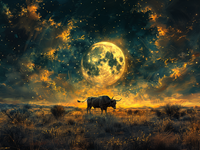Galactic mergers occur when the stars, dust and gas holding neighbouring galaxies together are attracted by their mutual gravity, interact and collide. A compilation of James Webb Space Telescope images capturing these moments:
Stephan's Quintet - 4 of the 5 galaxies in this image are interacting. (The galaxy on the left is actually much closer than the rest of the group!) Webb will revolutionise our knowledge of star formation and the gas interactions within it.
Il ZW 96 - Two merging galaxies distort each other's shape. Bright tendrils of star-forming regions connect their glowing cores.
Arp 220 - Arp 220 is the brightest of the 3 galactic mergers closest to us and is the result of a collision between 2 spiral galaxies that began about 700 million years ago.
IC 1623 - About 270 million light-years away, this pair of intertwined galaxies is colliding, creating new stars at more than 20 times the speed of the Milky Way.
Image Description:
1. A group of five largely pink galaxies: two in the centre, one towards the top, one in the upper left and one towards the bottom. One is slightly separated. All five galaxies have bright white nuclei, each with a slightly different size, shape and structure.
2. Two merging galaxies form a bean-like shape. The nuclei of the galaxies are blue in colour and surrounded by bright coral branches. The lower galaxy has a mostly regular spiral shape, while the upper one has become a condensed knob. Above both is a translucent arc of faint dust.
3. A large snowflake-like object with a bright white core and 8 pinkish-orange spikes. It is surrounded by pinkish-orange and blue gas strips.
4. The two galaxies seem to roll together into a blue and pink ball. Long, blue spiral arms extend vertically. Strands of hot gas spread horizontally on the blue arms, mostly bright coral pink. Eight large, golden diffraction spikes radiate from the centre of this ball.


 Nielawore
Nielawore












Yorumlar
dazzling!
Yorum yazmak için lütfen giriş yapınız